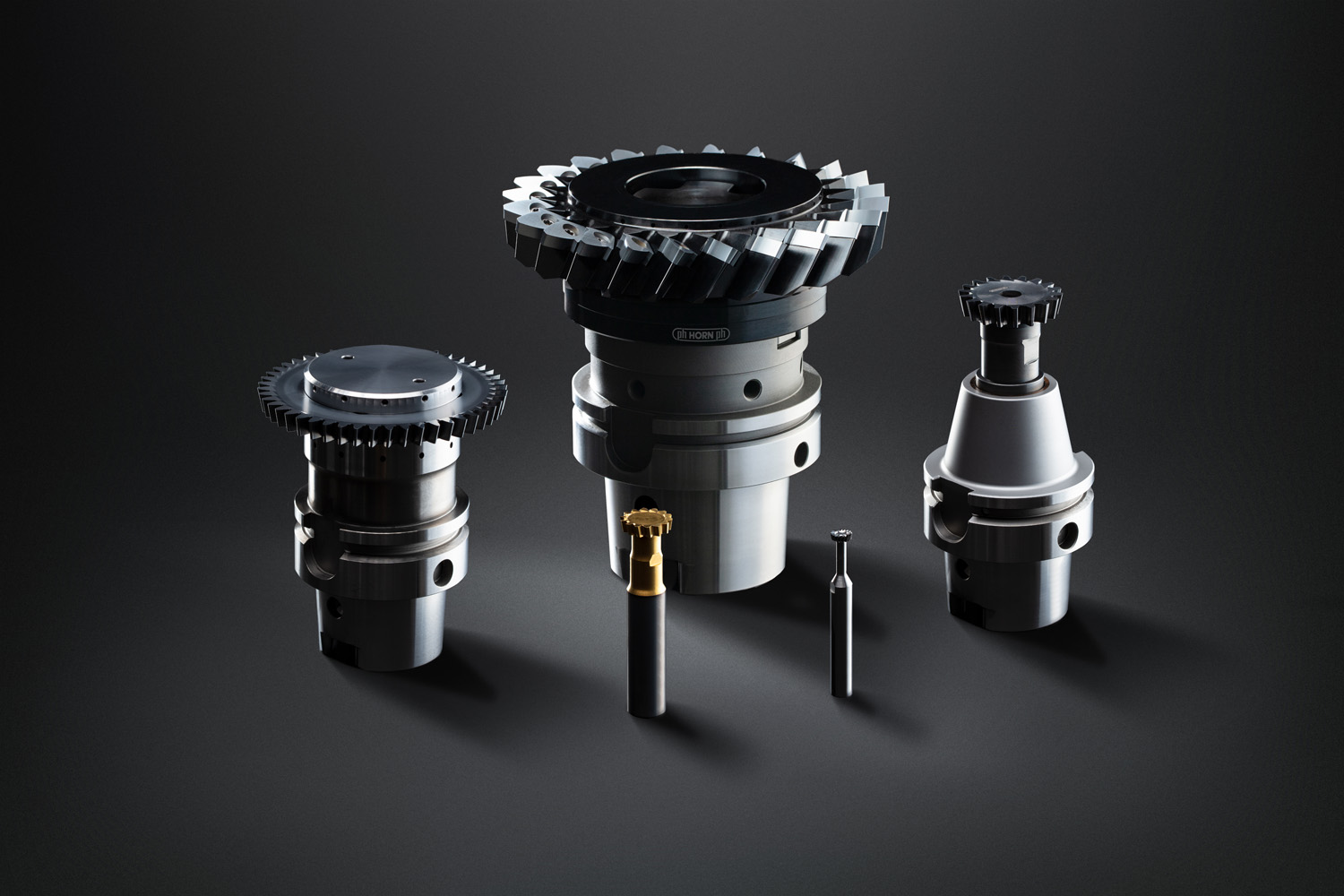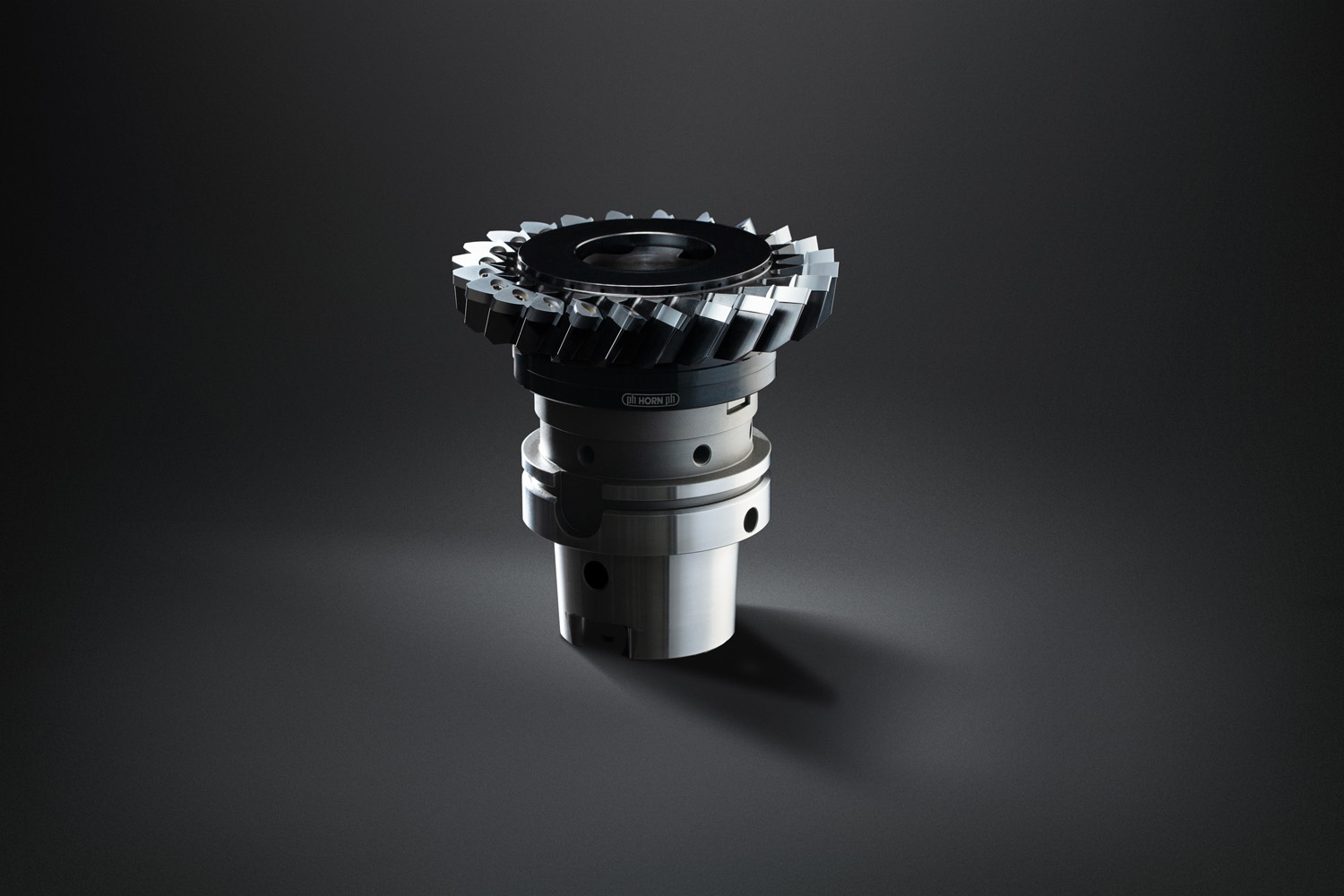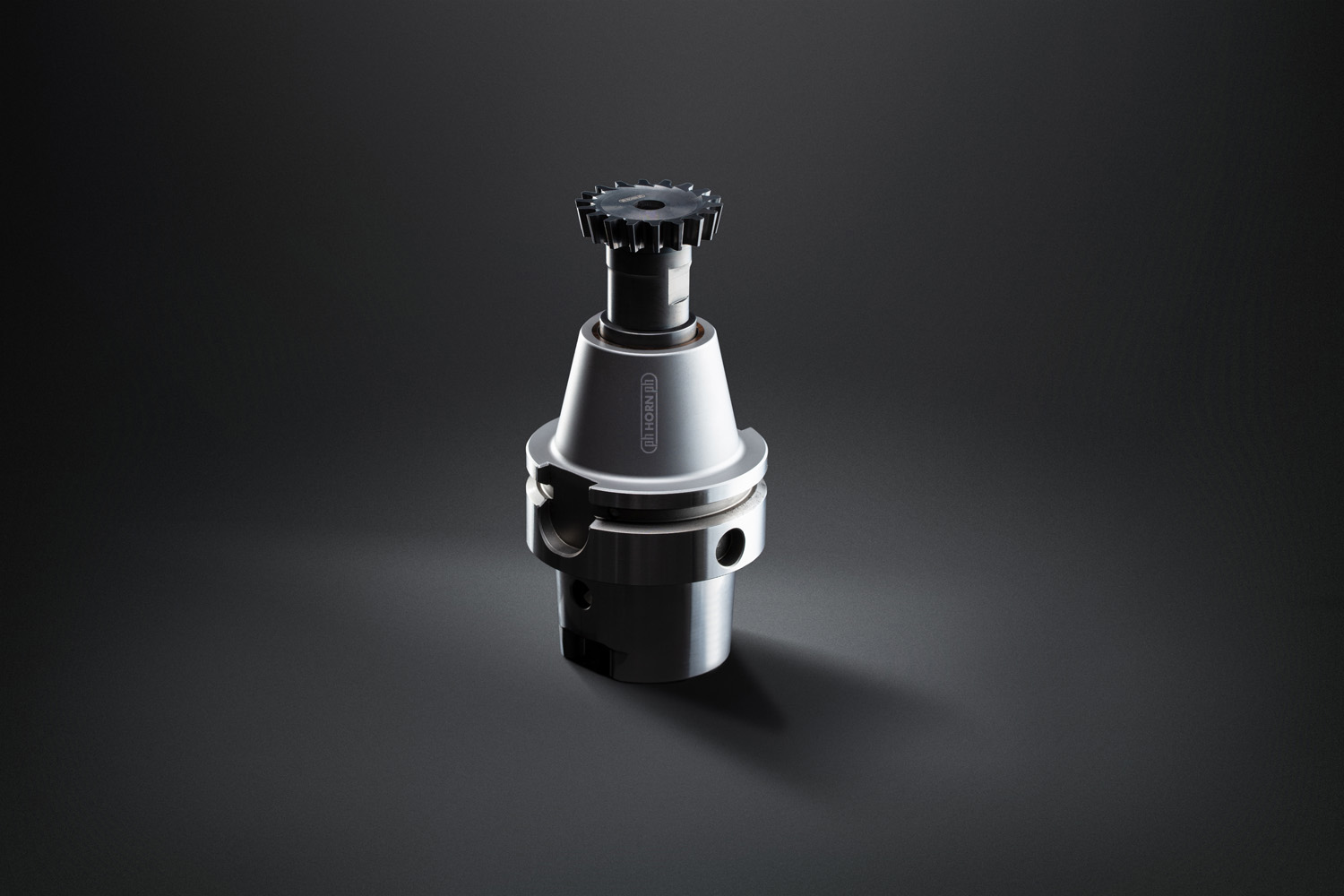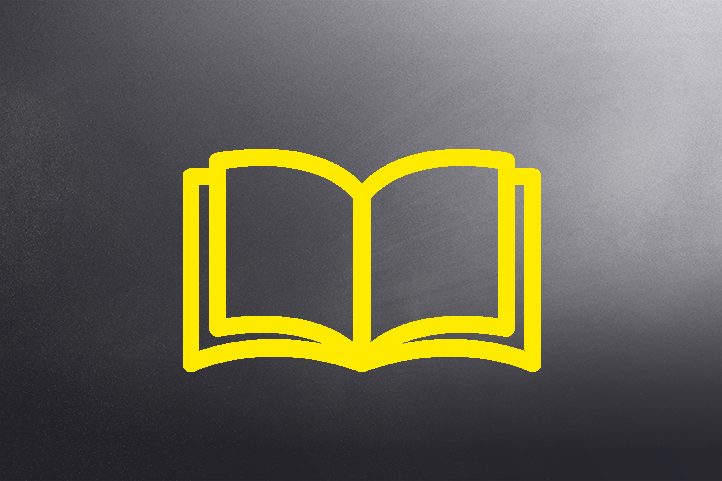
Highly productive production of splines and other internal profiles as well as external gears.
Most important advantages: short machining times, suitable for use on turning/milling centres, turning and gear cutting in one clamping and no undercuts at the root of the gear teeth.
Gear cutting of medium to large batches, with each tool being individually adapted to the application and the material to be machined.

Short process times, especially for internal gears of larger module.
Large and rigid milling/turning centres enable synchronisation between workpiece and tool spindle for large modules.
Discussion with the user concerning the tool design and recommended process, and feasibility check before implementation.

Use of coupled and synchronised spindles as well as special software.
Easy implementation of the process on universal machines and machining centres.
Economical production of different tooth profiles, such as external or internal gears.
Gear skiving
Internal gears, external gears and special gears: The highly complex technology of gear skiving can be easily implemented on multi-tasking turning centres and machining centres using coupled and synchronised spindles in conjunction with special software. Horn's product portfolio includes a wide range of tools for skiving different gear geometries. Whether external or internal gears, spur gears or splines, or even regular special shapes, all these tooth profiles can be produced extremely economically.
The tool system enables highly efficient production of internal gears, splines and other internal profiles, as well as external gears with interfering edges. The most important advantages of gear skiving in these applications are the significantly shorter process times compared to gear shaping, its use on optimised turning/milling centres, turning and gear cutting in a single clamping, and the elimination of undercuts at the root of the gear teeth. In addition, the usually more productive and cost-effective process compared to gear shaping and broaching, and the four to five times shorter cycle time compared to slotting, are important benefits. So also is the possibility of hard machining gears into the solid. The gear skiving tools are designed for gear cutting medium to large batches. Each tool is individually adapted to the application and the material to be machined, whereby the different tool interfaces are based on the number of teeth and the module.
Especially for internal gears, Horn's process shows the advantage of a short process time for larger modules. Large, rigid milling/turning centres that enable synchronisation of the workpiece and tool spindle are required for gear skiving these modules. The larger the module, the more critical is machine rigidity. This issue can be mitigated in respect of the tool by dividing the cut between the left and right flanks. After gaining experience with small solid carbide skiving tools, Horn used the know-how to address larger modules. Technical experts check the feasibility of each application before implementation and discuss with the user the tool design and recommendations for the process.


